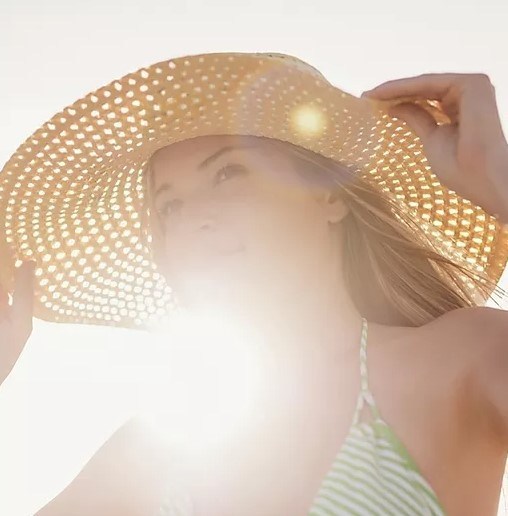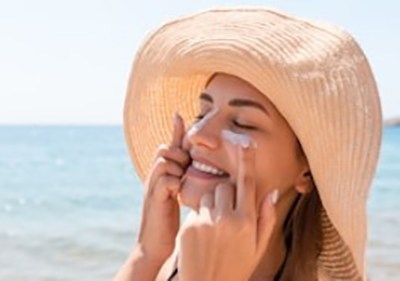
As we are entering warmer months, this is a perfect time for a refresher on sunscreen.
What should I look for in a good sunscreen?
- Should be easy to use daily.
- Should be individualized to suit your skin type, age, moisture level, and individual conditions and sensitivities.
- Should be at least an SPF 15.
- Should be broad-spectrum, shielding against both UVA and UVB rays.
What’s the difference between UVA and UVB rays?
The sun projects light in a spectrum, and a certain area of that spectrum reaches the earth and can affect skin.
- Ultraviolet B (UVB) rays are short rays that penetrate the epidermis to the basal layer. UVB rays cause sunburn and are believed to cause most skin cancers.
- Ultraviolet A (UVA) rays are longer, more deeply penetrating rays that affect the dermis, and they are believed to cause the most damage to the dermal structure of the skin and may be most responsible for DNA damage and melanoma. UVA rays can penetrate glass windows.
An easy way to remember is UVB for burning and UVA for aging.

What does broad-spectrum mean?
Broad spectrum means the entire spectrum of ultraviolet rays, including UVA and UVB.
How do sunscreens work?
Active ingredients in sunscreen work by absorbing UV rays and neutralizing them or by physically reflecting the rays away from the skin.
What does SPF mean?
SPF stands for sun protection factor and measures how long you can stay out in the sun without getting a sunburn. If you go out in the sun without sunscreen and normally would burn in 30 minutes, an SPF of 4 would theoretically allow you to stay out four times as long, or two hours, without getting a sunburn. However, the skin can become inflamed and cellular damage can appear long before the skin turns red.
The SPF numbers you see on a sunscreen bottle refer to protection from ultraviolet B (UVB) rays from the sun. Most skin experts believe that a sunscreen with an SPF of 15 or above is adequate for most people. Higher SPFs may be more appropriate for people who expect to be in direct sunlight for long periods of time.
Do higher SPFs filter more of the spectrum of UV light?
Only slightly. The difference between an SPF 15 and SPF 30 sunscreen is about 4% more light filtered. The higher the SPF, the less the spectrum filtered increases.
Is there a difference between sunscreens for the face vs. the body?
Yes. Sunscreen for the face is typically lighter in weight and texture than that intended for the body. Facial sunscreens are often intended to be used with makeup over them. Body sunscreens may be water resistant, while facial sunscreens usually are not.
When should you apply sunscreen?
Sunscreen should be applied at least 30 minutes prior to sun exposure to allow the sunscreen time to absorb into the skin surface.
How often should I reapply sunscreen?
If you are in direct sunlight, the sunscreen should be reapplied every two hours and more often if it is not waterproof or you have extremely sun-sensitive skin. Sunscreen should be reapplied after swimming.
Does cloudy weather make sun less intense?
Only slightly. Many people will still get sunburns and sun damage on overcast days. Clouds can cut about 20% of sunlight reaching the earth, but rays can still be damaging.
My makeup foundation has sunscreen in it; is that good enough?
The amount of makeup applied may vary greatly from person to person. Heavy application of a makeup product may provide enough product to protect the skin, but light or partial applications may not provide enough to give the protection needed.
Source: The Skin Care Answer Book, Mark Lees. ISBN 10: 1435482255 / ISBN 13: 9781435482258. Published by Cengage Learning 2010-02-24, Clifton Park, N.Y., 2010
